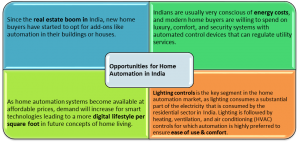To understand why retrofit solutions have not yet been successful in India yet, let’s take a detour into the mind of a typical Indian home builder. The psychology of an Indian consumer is to treat his/her own house as a lifetime dream, a culmination of many years of savings, hard work and desires. Hence, the consumer desires to make this dream as big and grand as possible (relative to his/her spending power, of course!).
Before or during construction- Upmarket individuals (like HNIs/NRIs or wealthy businessmen) want the best features and fancy gadgets/tools in their new dream house. During the planning and construction of the new house, their minds are only occupied with this one goal; to fit the latest available trends in their house as well, and be the envy of their social circles. This is evidenced best during the Gruhapravesham (House warming ceremony) which marks the auspicious ‘opening’ of the home, where relatives, acquaintances and friends are invited to witness the new house in all its grandeur. While the owners have just moved into the house and the novelty lasts, Home owners take pride in showing off various aspects of their home to visitors/friends for the first few days or weeks.
A year or two later- As the months/years pass, the consumer has been sated with his/her ideal of the dream home, long having gotten used to all the features available and nothing in these technologies makes him excited anymore. The customer now slowly feels the pinch of maintenance of these added gizmos and the costs needed to keep all of them running in prime condition, he is no longer interested in investing on any new add-on for the home, his hope is that all existing components continue running for as long as possible!
At this stage of the Home owner’s cycle, he will not contemplate further investment on luxury items unless it is a necessity or a separate unit to add like a swimming pool or Home theater.
After 4-6 years of living in the house, the owner now dreams of his next dream house with all his newly added aspirations and plans for the next home instead of directing any new investment into this home.
Let’s try to discern now why retrofit doesn’t work in the above scenario-
•Timelines or Milestones are required to push customer with typical Indian mentality. If there is no hurry, then Chalta hai (we can do it some other time) attitude prevails. But with the Housewarming ceremony and the threat of embarrassment of a partially completed house to display to people, it becomes a powerful motivator for consumers to take quick decisions to finalize Automation and other add-on immediately and push for installation.
•Home automation solutions, in their current avatar in India can be considered expensive and cosmetic add-on to a home. No one ventures into adding value to existing buildings once their ideal of a dream home has been satiated. Hence, retro-fit HA has not been able to penetrate the market or fulfill any potential yet.








